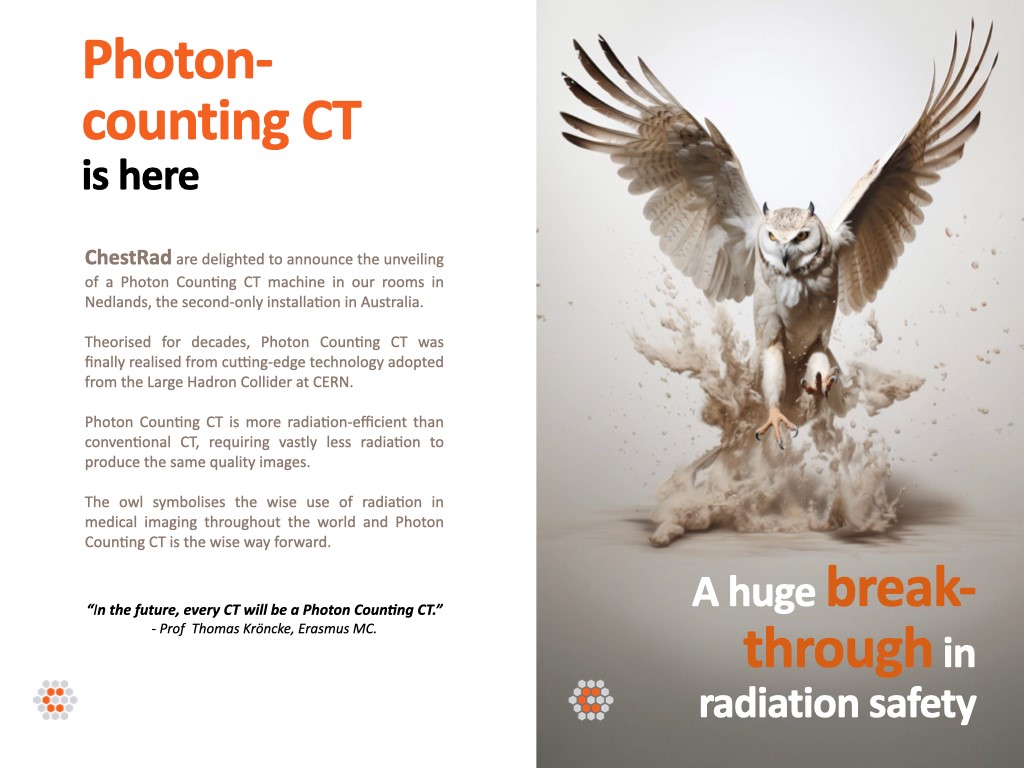About CT Scans
A “CT” or “CAT” scan is an abbreviation for Computerised Axial Tomography. A CT enables radiologists and cardiologists (doctors who specialise in imaging) to visualise diseases that cannot be seen well using standard X-Rays.
CT imaging produces a vast number of images of your body that are reconstructed by a highly sophisticated computer into 2D and 3D images. ChestRad has one of only a few top tier CT scanners available in Perth – these particular machines ensure the lowest radiation dose and highest image quality possible.
For some CT examinations, such as coronary CT scans, an injection of contrast (dye) into a vein in your arm is necessary to display internal structures better, such as blood vessels and the heart. Some people may have an allergy to CT contrast. If you have had a reaction to CT contrast before, please let us know in advance as we may prescribe pre- and post-scan medications to reduce your risk of a reaction.
The injection of contrast often causes the feeling of a whoosh in your arm vein and a warm to hot flush in your neck and face and sometimes elsewhere such as your pelvis. In addition, it may cause a metallic taste in the mouth. These sensations last only a few seconds.
During the Scan
The scanner has a table and a large donut shaped ring. The radiographer (machine technologist) will ask you to lie down on the scanner table and make you as comfortable as possible. They will then position the table for the part of your body being scanned.
The radiographer will be in communication with you throughout the scan. The scanner does not touch you and you will not feel the X-Rays. The scanner makes a buzzing sound and the table you are lying on will move in and out of the donut-shaped ring. It is important that you lie still and the radiographer may put a broad strap across your waist to help you do so. You may be given breathing instructions for the scan.
In general, you will be on the CT table no more than 10 minutes. The actual scan lasts just a few seconds.
At the end of the scan you may be given special instructions by the radiographer though usually there will be no restrictions to your normal activities.
